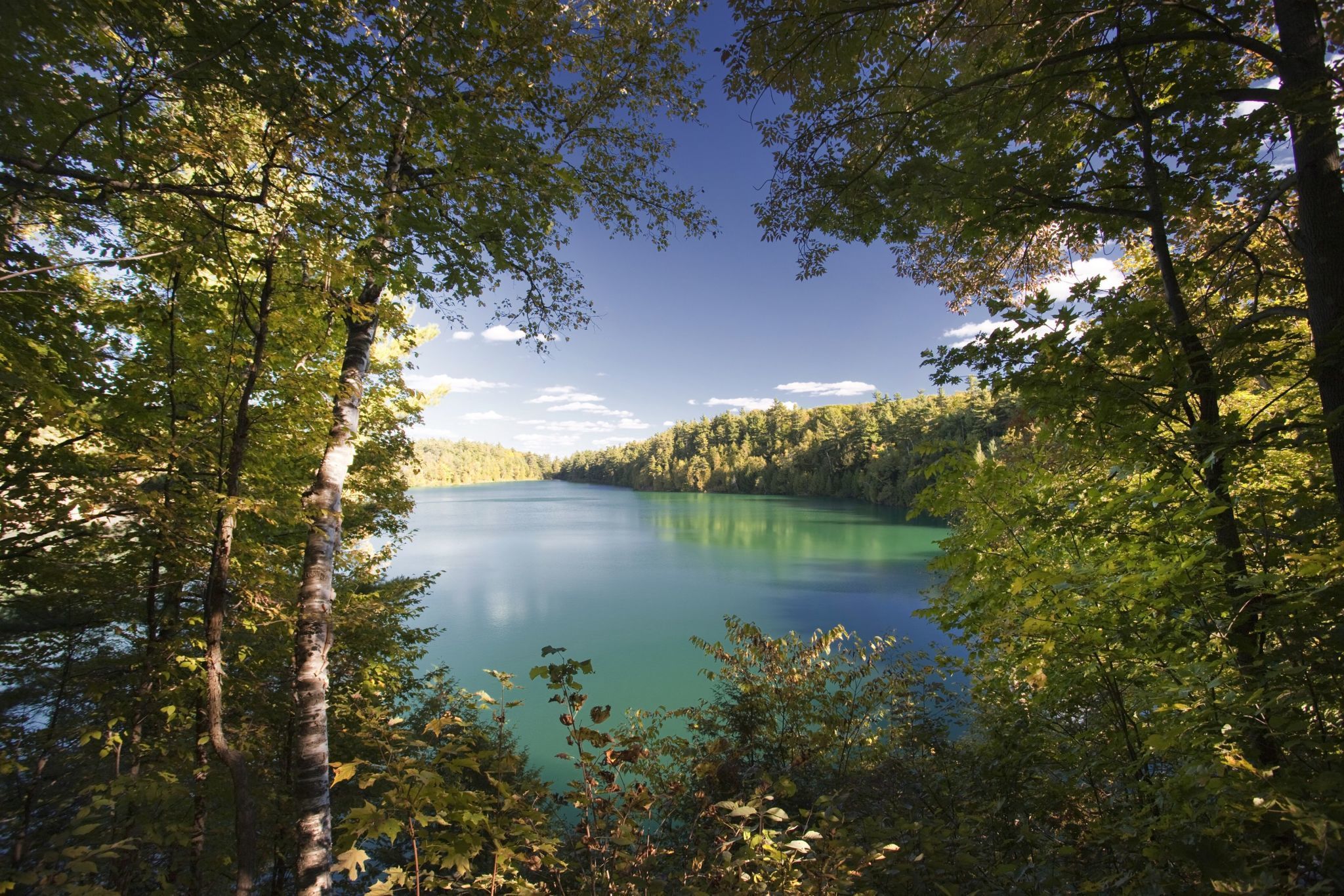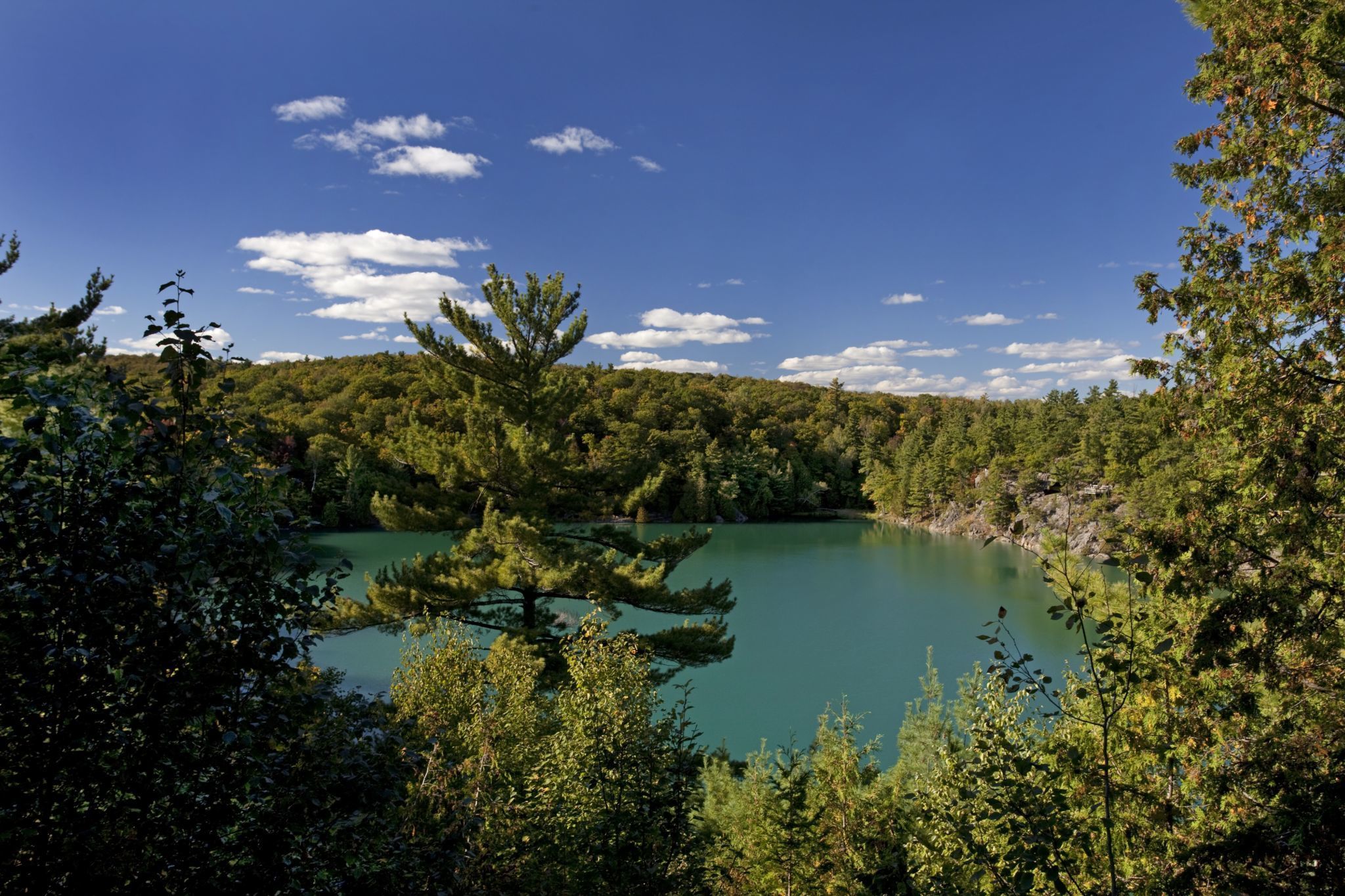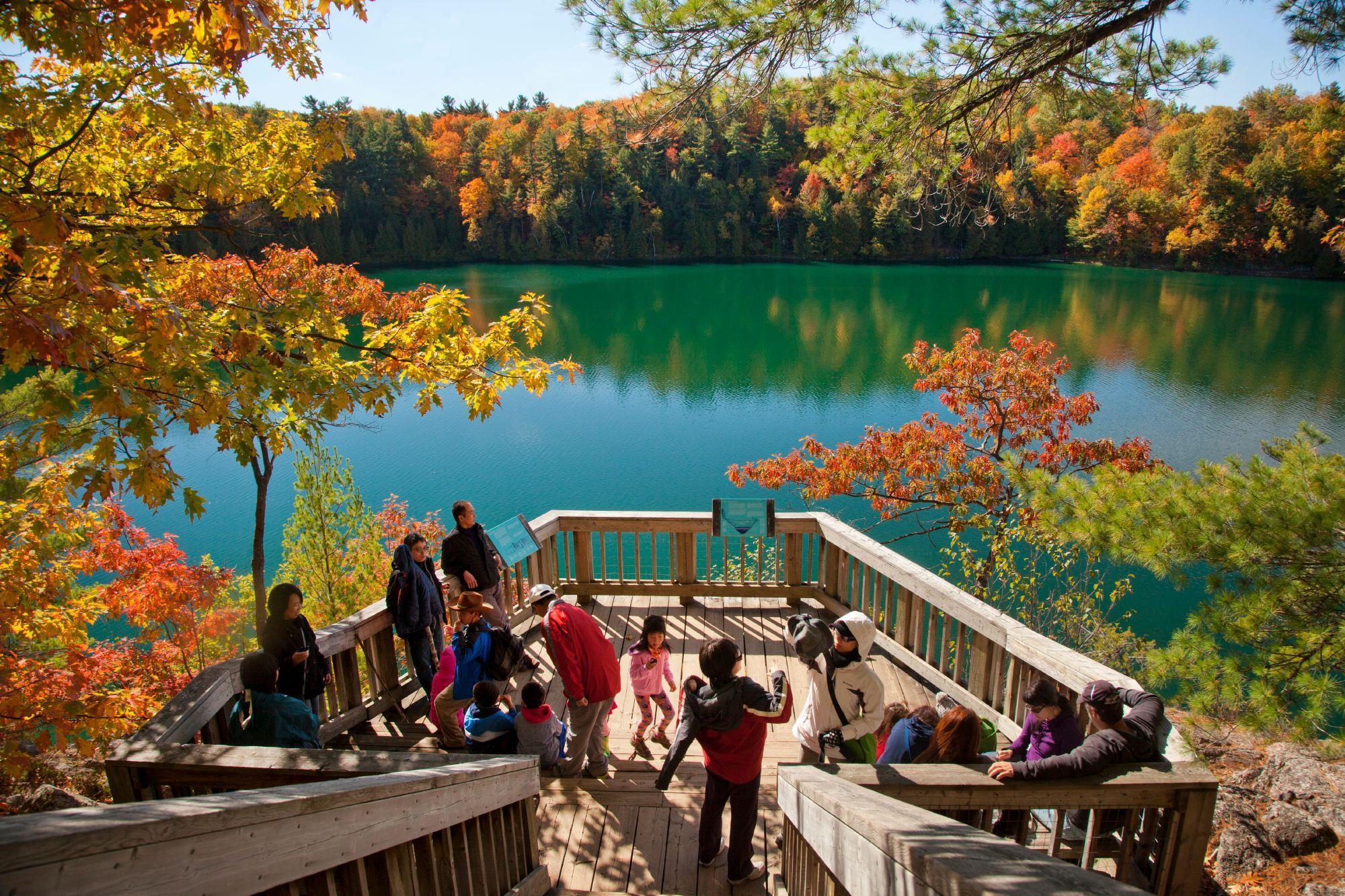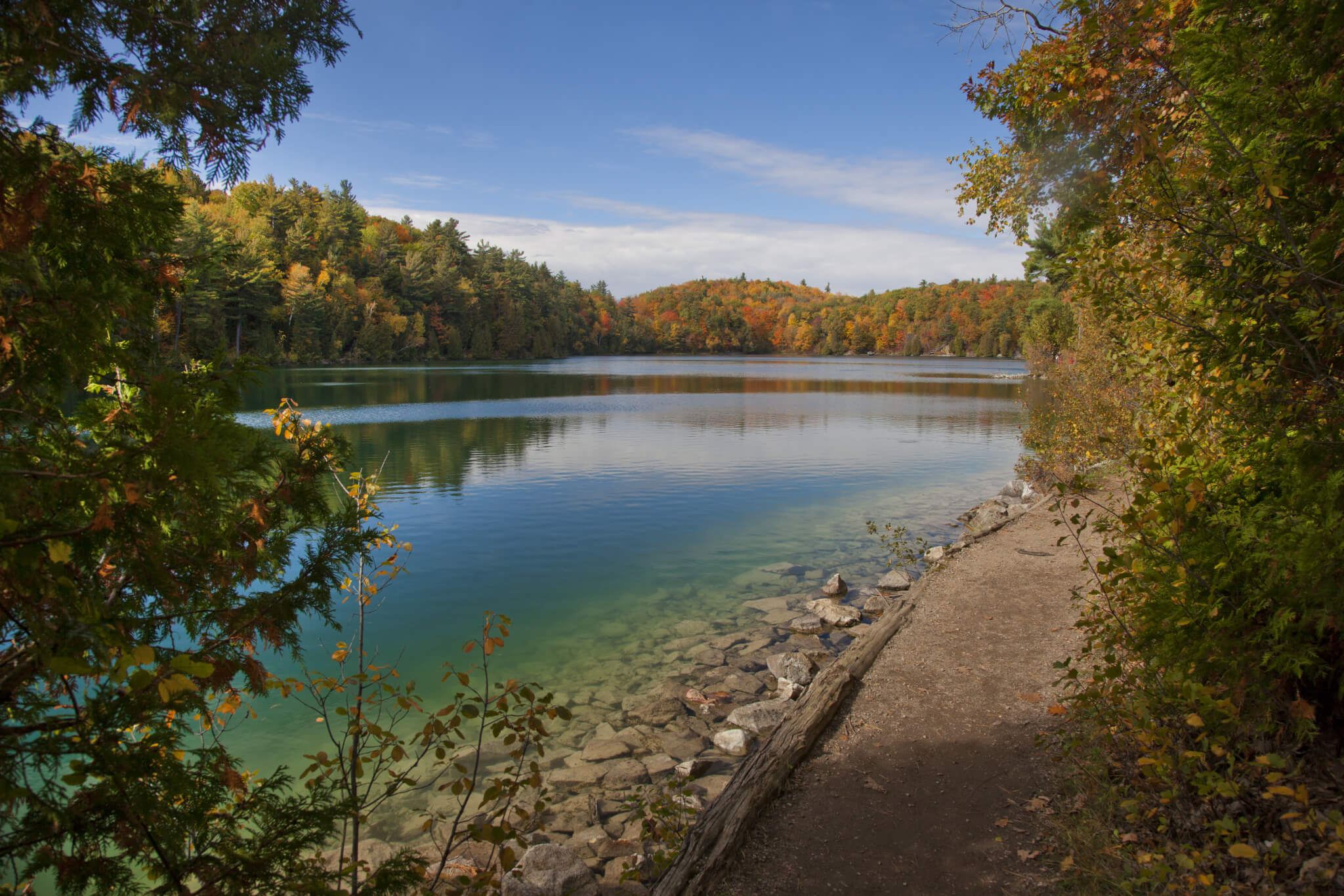Advisory
Please take note of the following before your visit.

Pink Lake is Gatineau Park’s most outstanding lake, because of its unusual makeup. Its rare beauty makes it one of the most popular sites in the Park. It has a three-season trail and a lookout.
Despite having the name “Pink,” the lake is actually green. It is named after the Pink family who settled the land in 1826.
Important
- Pink Lake is very fragile, and it is important that visitors follow the principles of outdoor ethics.
- Dogs and other pets are not allowed at Pink Lake.
- Swimming is not permitted.
- Boats and other watercraft are not permitted.
Visiting Pink Lake
Hours and how to get there
The most direct access is from the Pink Lake parking lot, accessible from the Gatineau Parkway. In summer, the parkway is open to motor vehicles, cyclists and pedestrians according to a variable schedule. In winter, the parkway becomes a cross-country ski trail, and Pink Lake Trail is closed.
On foot or by mountain bike: If you’re up for the challenge, here are three alternative options to access Pink Lake on foot.
- Start at parking lot P2 (Relais plein air) and take the Leamy Creek Pathway (Trail 27). Then follow the Gatineau Park Pathway (Trail 5) until you reach the Gatineau Parkway, which takes you to Pink Lake. Distance to Pink Lake: 8.6 km (round trip).
- Start at parking lot P6 (Mackenzie King Estate) and take trails 15 and 35. Distance to Pink Lake: approximately 7.2 km (round trip).
- Start at parking lot P2 (Relais plein air) and take the Leamy Creek Pathway (Trail 27). Then follow the Gatineau Park Pathway (Trail 5) to reach Trail 25. Turn left on Trail 15, and left again on Trail 35. Distance to Pink Lake: approximately 10.6 km (round trip).
By bike: Start at parking lot P6 (Mackenzie King Estate) and take Mackenzie King Road, Champlain Parkway and Gatineau Parkway (8.6-km round trip).
Points of interest
Pink Lake Trail
The Pink Lake Trail is a 2.3-km loop around the lake, which has several sets of stairs and interpretation panels. It is closed during the winter.
Pink Lake Lookout
Pink Lake Lookout provides a unique view of the lake.
Facilities
- Parking: There are two free parking lots, one at the lookout and one at the Pink Lake Trail.
- Washrooms: There are outhouses at the parking lot for the Pink Lake Trail.
- Universal accessibility: Pink Lake Lookout is universally accessible, as is a small stretch of the Pink Lake Trail. One spot in each parking lot is designated for those who have an accessible parking permit.
About Pink Lake
A meromictic lake
Pink Lake’s waters do not mix, because it has a small surface and bowl-like shape, and is surrounded by steep cliffs that protect it from the wind. There is no oxygen in the deepest seven metres of the lake.
Why is Pink Lake green?
Unfortunately, Pink Lake’s popularity with Park visitors over the years sped up this process. The algae were growing so rapidly that eutrophication would have taken only a few decades. To preserve the lake for future generations, we have rehabilitated the site by building platforms and a trail to limit the damage caused by erosion. Volunteers also helped plant 10,000 small trees.
Life in Pink Lake
Pink Lake is also home to the three-spined stickleback fish, a saltwater fish left behind from the Champlain Sea, which used to cover the region. This little saltwater fish adapted to the lake’s gradual desalination, and today lives in the lake’s fresh water.





